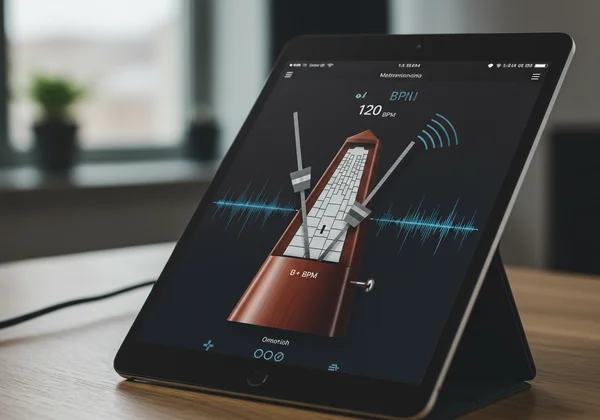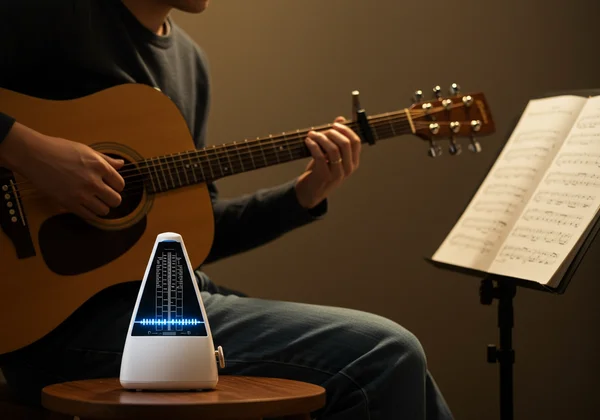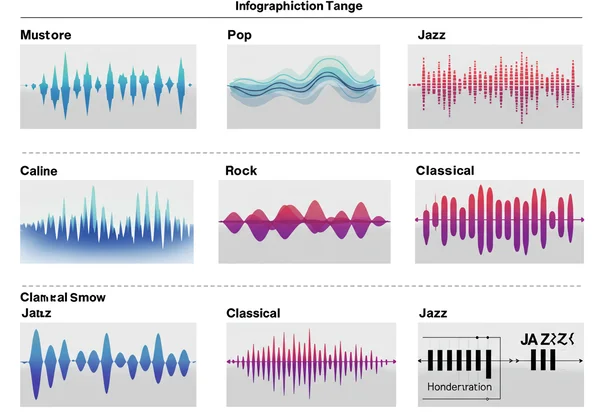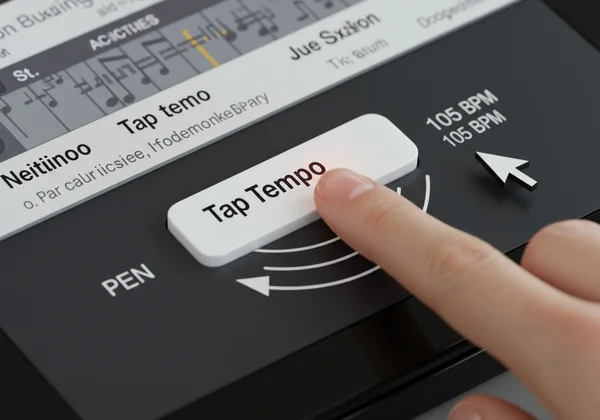The Ultimate Guide to Online Metronome BPM for All Music Genres & Practice Goals
Choosing the right metronome speed can feel tricky. Whether you're a musician, student, or even an athlete, a common question arises: What is a good BPM for practice? This guide cuts through the confusion, helping you find the ideal tempo for any music genre, practice goal, or creative project. Discover how a well-chosen online metronome setting can transform your rhythm practice and performance, paving the way to musical mastery. Discover your ideal tempo today by visiting our free online metronome.
Understanding BPM: Your Foundation for Rhythm
Before diving into specific tempos, it's essential to grasp the basics of BPM tool and its significance.

What Does BPM Really Mean in Music?
BPM, or Beats Per Minute, is the universal language of tempo in music. It precisely indicates how many beats occur within one minute. For instance, a metronome 60 bpm setting means there are 60 beats in a minute, equating to one beat per second. This fundamental concept helps musicians worldwide communicate and maintain accurate speeds, ensuring ensembles stay synchronized and practice remains consistent. Understanding BPM is the first step towards developing a solid sense of timing.
Why Choosing the Right Tempo Matters for Practice
Selecting the appropriate tempo is critical for effective practice. Practicing too fast can lead to ingraining mistakes, while too slow might not provide enough challenge. The right tempo allows you to focus on accuracy, technique, and musicality without being overwhelmed. It helps build muscle memory and internalize the pulse, leading to more confident and expressive performances. A free online metronome provides the consistent external beat needed to hone your internal rhythm.
Finding Your Ideal BPM for Practice Goals
Tailoring your BPM to your specific practice objectives is key to unlocking rapid progress.
The Power of Slow Practice & Gradual Speed Increase
Slow practice is a cornerstone of effective musical training. When you practice at a slow BPM, you give your brain and muscles time to process complex passages accurately. Start with a tempo where you can play without errors, even if it feels painstakingly slow. For example, if a piece is marked at 120 BPM, begin at 60 BPM or even 40 BPM. Once you can play it perfectly five times in a row, incrementally increase the speed by 5-10 BPM. This systematic approach, often called gradual speed increase, builds confidence and consistency, preventing bad habits from forming.

Setting Tempos for Technical Exercises & Scales
Technical exercises, such as scales, arpeggios, and etudes, benefit immensely from precise tempo settings. The goal here is to achieve fluidity and evenness. For many beginners, practicing metronome for guitar or piano scales might start as low as 80 BPM, focusing on clean articulation and consistent rhythm. As your dexterity improves, you can gradually raise the BPM, challenging your speed while maintaining accuracy. Use a consistent BPM increment to track your progress and celebrate each milestone.
Optimizing BPM for Sight-Reading & Performance Prep
When practicing sight-reading, it's often beneficial to set a slightly slower tempo than the piece's indicated speed. This allows you to process the notes and rhythm more comfortably without rushing. For performance preparation, you'll want to gradually work up to and even slightly beyond the target tempo. Practicing at a marginally faster BPM setting than required builds resilience, ensuring that the actual performance tempo feels relaxed and manageable. Consistent practice with a reliable metronome online is vital for these advanced stages.
BPM by Music Genre: A Quick Reference Guide
Different music genres often gravitate towards specific tempo ranges and rhythmic feels. While these are guidelines, they provide an excellent starting point for finding your music genre BPM guide.

Pop & Rock: Common Grooves and Tempos
Pop and Rock music typically feature a strong, steady beat that's easy to tap your foot to. Most pop and rock songs fall into the 80-140 BPM range. Ballads might be slower (60-80 BPM), while upbeat rock anthems or dance-pop tracks can easily hit 130-160 BPM. The emphasis is on a consistent groove and pulse, making the metronome online an indispensable tool for producers and drummers laying down a beat.
Classical Music: Interpreting Tempo Markings & Rubato
Classical music often uses Italian tempo markings (e.g., Allegro, Andante, Presto) rather than strict BPM numbers. However, these markings correspond to general BPM ranges:
- Largo/Grave: Very slow (40-60 BPM)
- Adagio: Slow and stately (66-76 BPM)
- Andante: Walking pace (76-108 BPM)
- Moderato: Moderate (108-120 BPM)
- Allegro: Fast, lively (120-168 BPM)
- Presto/Prestissimo: Very fast (168-200+ BPM)
Classical pieces also frequently employ rubato, where the tempo is flexible for expressive purposes. While a metronome provides a foundational pulse, developing a feel for rubato comes from experience and musicality. Still, initial practice with a precise BPM tool helps internalize the piece's inherent rhythm before adding expressive nuances.
Jazz, Funk & Hip-Hop: Understanding the Feel and Pulse
These genres often feature complex time signature metronome patterns and a strong emphasis on rhythmic feel. Jazz can range from slow ballads (40-60 BPM) to blistering bebop (200-300+ BPM). Funk typically grooves at 90-120 BPM with intricate sixteenth-note rhythms. Hip-hop tempos vary widely, from slow, introspective beats (60-80 BPM) to faster, energetic tracks (90-110 BPM), often with a half-time feel. For these genres, setting your online metronome and focusing on subdivisions is crucial to capturing the authentic feel and pulse.
Electronic Music & Dance: Precision for Production & Movement
Electronic music genres like House, Techno, Trance, and Dubstep rely heavily on precise, often unvarying tempos.
- House: 118-130 BPM
- Techno: 125-140 BPM
- Trance: 135-145 BPM
- Dubstep: Often 140 BPM (but felt at half-time, 70 BPM)
For producers, maintaining a consistent BPM is paramount for seamless mixing and production. Dancers and athletes also use these tempos to maintain rhythm in routines or workouts. The precision offered by a high-quality BPM tool is indispensable in these contexts.
Smart Strategies to Choose Any Song's Tempo
Beyond genre guidelines, how do you determine the ideal BPM for music you're learning or creating?
Using Your Ear: Listening for the Natural Pulse
One of the most intuitive ways to find a song's tempo is to simply listen and feel its natural pulse. Tap your foot, clap your hands, or nod your head along to the music. After a few seconds, you'll likely settle into a consistent rhythm. This internal feeling is your starting point. Use your internal rhythm as a guide to set the initial tempo on an online metronome.
Leveraging Our Tap Tempo Feature
Our online metronome offers a unique and incredibly useful feature: Tap Tempo. This allows you to manually tap along to any song, and the tool will automatically calculate the BPM for you.
-
Visit the Metronome.wiki homepage.
-
Find the "Tap Tempo" button.
-
Start tapping your spacebar or clicking the button in time with the music.
-
The metronome will instantly show you the calculated BPM.

This feature is invaluable for professional musicians needing to quickly ascertain a song's speed for rehearsal or performance, or for composers wanting to capture a fleeting rhythmic idea. Tap Tempo ensures you can find the tempo of a song accurately and instantly.
When to Adjust: Flexibility in Tempo Selection
While a metronome provides a steady beat, remember that musicality sometimes calls for flexibility. Adjusting BPM might be necessary for:
- Expressive Sections: Certain musical phrases might benefit from a slight push or pull in tempo.
- Live Performance: Audience energy or venue acoustics might subtly influence the ideal tempo.
- Personal Comfort: Sometimes, a slight deviation from the textbook BPM feels more natural for your interpretation.
Always use the metronome online as a guide, not a rigid master. Its purpose is to build your rhythmic foundation, allowing you the freedom to interpret. To experiment with different speeds and find what works best, open our online metronome and set your BPM now.
Master Your Tempo: Unlock Your Musical Potential Today
Understanding and effectively utilizing BPM is a superpower for any musician, student, or performer. From slow, deliberate practice to mastering complex genres, the right tempo is your foundation for success. Our free online metronome provides an experience that is accurate, highly customizable, and always available. Whether you're trying to improve your rhythm or find the ideal BPM for music production, our tool is designed to support your journey.
Ready to stop guessing and start mastering your rhythm? Take control of your practice and unleash your full musical potential with confidence. Visit Metronome.wiki today and start practicing with the ultimate online metronome!
Frequently Asked Questions About BPM & Metronome Practice
What is a good BPM for practice?
A good BPM for practice is one where you can play accurately and comfortably without making mistakes. For new material, always start slow—often 40-60 BPM—and gradually increase the tempo as your accuracy improves. The goal is consistent, error-free playing. Start your slow practice journey on our online metronome tool.
How do I find the tempo of a song?
You can find the tempo of a song by listening and tapping along to its pulse. For precise measurement, use a BPM tool with a "Tap Tempo" feature. Simply tap in time with the music, and the tool will calculate the exact BPM. Try out our intuitive tap tempo feature right now!
Can a metronome improve my rhythm?
Absolutely! A metronome is one of the most effective tools for improving rhythm and timing. It provides a consistent, external beat that helps you internalize the pulse, identify rhythmic inaccuracies, and develop a strong, steady tempo sense. Consistent practice with an online metronome will significantly enhance your rhythmic precision. Get started and improve your rhythm today!